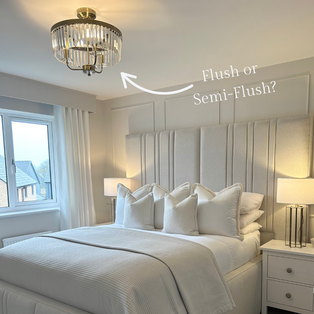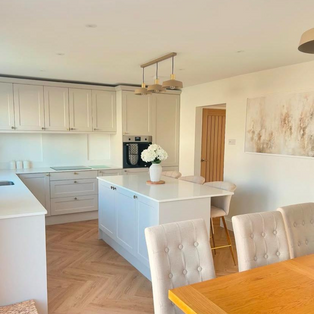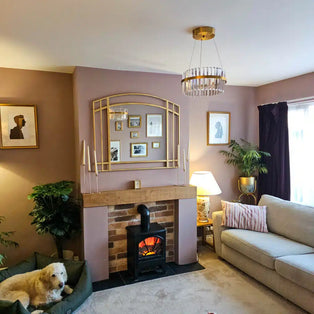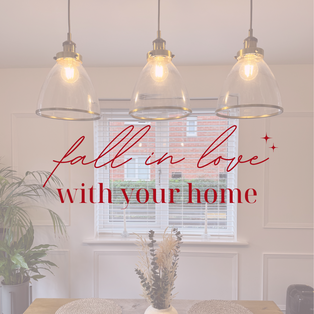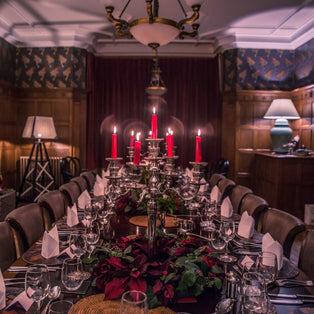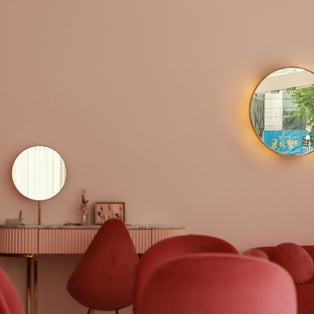
A Complete Guide on How to Choose the Right Living Room Floor Lamps
Brighten up your living room with a floor lamp that blends style and function. Discover how to choose the right floor lamp with this complete style guide.
Most homeowners probably consider furniture to be the most crucial element of a room. But what they don't realize is that lighting is equally as important.
The lighting of a room should be used to highlight its most beautiful elements, so choosing the right lighting fixtures for the job must be carefully considered.
For insider tips on how to bring one of the main rooms of your home to life, here's how to choose living room floor lamps.
5 Expert Tips on Choosing the Perfect Living Room Floor Lamp
Now, you may be wondering what the point of a floor lamp is when your living room already has overhead lights or wall sconces. But lighting a living room is so much more than direct, overhead lighting which can be harsh and uninviting.
Essentially, the best kind of lighting for popular rooms in your home should be layered. This means that your lighting should come from above, at eye level, and other angles in-between.
Learn more about decorating with floor lamps to achieve this layered-light feel.
1. Determine the Purpose of Your Floor Lamp
When it comes to choosing the right floor lamp, or other lamps for your living room, there are three types of light options to consider.
Ambient Lighting
Ambient light is functional, but it also plays a role in softening the light in a room to make it feel welcoming, warm, and cosy.
Floor lamps with fabric lampshades are best for creating ambient lighting.
Task Lighting
This type of light serves a direct purpose and is also known as utility lighting. It's ideal for certain tasks that require direct, bright light, such as reading.
A floor lamp with a metal shade tends to create the best directional light. This is because light cannot escape the lamp shape and is directed where ever you point it.
It's important to find a lamp that is low enough or one that can be manoeuvred to suit its task.
Accent Lighting
Accent lighting is used to highlight certain areas, pieces of décor, or furniture in a room. You can use accent lighting to show-off these areas in a subtle or showier manner.
A great way to create warm, diffused accent lighting is with a white or linen-coloured lampshade. Stay away from dark or black lampshades, unless you want to create a more dramatic corner of your living room.
2. Ensure Your Lighting is the Right Size
If you want to create a warm, relaxing atmosphere, it's important that your lampshade is the right size. In other words, choose a lamp that offers enough shade over the lightbulb when you're sitting down.
The last thing you want is to feel like you're being interrogated by your standing lamp with a bright light in your face. Ideally, you should go for a floor lamp height of between 1.3 - 1.7 metres.
Go for a lampshade that is long and wide enough to balance out the height of the lamp, too.
3. How Much Space Do You Have to Play With?
While most floor lamps are tall and vertical, there are numerous shapes on the market today that actually require a fair amount of floor space.
When choosing your floor lamp, taking into consideration how much room you have available in your living room. You don't want your lamp to look squashed into the space or look like an after-thought.
Vertical standing lamps take up a narrow amount of space, but often require a higher ceiling. Don't go for a standing lamp that's too tall, if the room has a low ceiling.
Arc floor lamps tend to take up more space horizontally due to their extension. A tripod base lamp also requires more floor space because of the spread of the legs.
Make sure you measure out the floor space you have to work with, then choose your lamp style accordingly.
4. Carefully Consider the Spread of Light
The height of your floor lamp ultimately determines how far the light spreads throughout your living room. Basically, the taller the floor lamp, the more ambient lighting your room will have.
However, tall standing lamps are not ideal if you're looking for task lighting, where you want the light to be closer and more focused.
Then there's the rest of the furniture in the room to consider, too. If you prefer low, platform-style pieces, make sure your lamp doesn't tower over your furniture. Choose a lower standing lamp that blends in with the height of other items.
You can also choose an adjustable floor lamp that can be heightened and lowered if you like to mix and match or move your furniture around often.
5. Choose a Floor Lamp That Blends With Your Decor
When it comes to choosing a floor lamp, you should consider your lamp choice like any other piece of décor in your living room. Based on your personal style and preferences, your floor lamp should match.
Use a floor lamp to complement the persona of the room. For example, if the rest of the room is calm and neutral, don't choose a garish, patterned lampshade. Go for something that is neutral and simple.
However, the rule of opposites can also work. If your room is brightly coloured and ornate, choosing a more subdued floor lamp could balance things out.
If you're going for a contemporary, modern look, it's best to choose a floor lamp that is simple, and streamlined with a slim base. Dome or drum-shaped lampshades add a sleek and sophisticated touch.
Light Up Your Life With Pagazzi Lighting and Mirrors
Choosing the right living room floor lamps is all about balance and function. We hope this blog has been useful in helping you choose the best floor lamp for your needs.
Looking to shop for modern floor lamp or table lamp designs? Check out our brilliant selection of lighting options here to perfectly complement your home.
